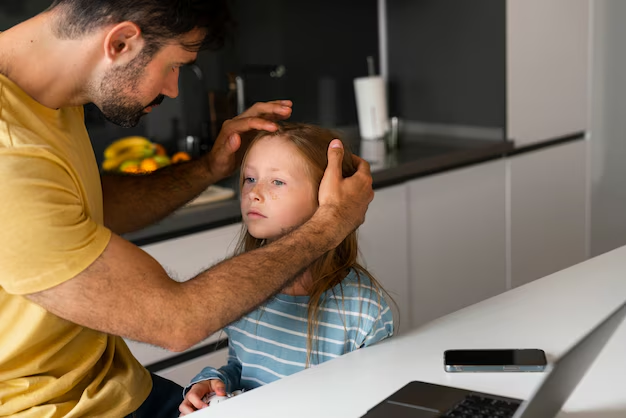Understanding Separation Anxiety: When Does It Typically Begin?
Separation anxiety is a common developmental stage every parent and caregiver should understand. Recognizing when and how it begins can help you support your little ones through this emotional period. Let’s explore the origins of separation anxiety, its typical onset, and practical ways to navigate this phase with your child.
What is Separation Anxiety?
Separation anxiety manifests as distress in young children when they are separated from their primary caregivers. It is a natural part of childhood development and an indication of healthy attachment. When experienced in moderation, separation anxiety is a sign that your child trusts you and relies on your presence for security.
The Roots of Separation Anxiety
Understanding the roots of separation anxiety is essential for recognizing its normalcy. It arises from a child’s growing awareness of the world and their understanding of object permanence—the concept that something continues to exist even when it's not visible. As infants begin to grasp this concept, they realize that when a caregiver leaves the room, they are not gone forever but will eventually return.
When Does Separation Anxiety Typically Start?
While separation anxiety can vary from child to child, it commonly begins between 6 to 10 months of age and peaks around 14 to 18 months. By 2 to 3 years, many children see a decline in symptoms as they gain more independence and social understanding.
This timeline aligns with key developmental milestones:
- Six months: Babies start recognizing familiar versus unfamiliar faces.
- Eight to ten months: With the development of object permanence, infants understand that a caregiver is absent rather than gone forever.
- Fourteen to eighteen months: The peak of separation anxiety due to increased mobility and exploration.
Can Separation Anxiety Occur Later?
In some cases, children might not exhibit significant separation anxiety until they are toddlers or preschool-aged. New circumstances, such as starting daycare or moving to a new home, can trigger anxiety later than expected.
Signs and Symptoms of Separation Anxiety
Recognizing the signs of separation anxiety is vital for addressing it effectively:
- Crying and tantrums when a parent leaves
- Clinging to caregivers
- Nightmares or trouble sleeping
- Refusal to engage in social activities away from familiar figures
- Anxiety at the sight or mention of impending separation
Distinguishing Normal Anxiety from Concerns
Separation anxiety is a normal aspect of childhood, but knowing what to watch out for is crucial. If these symptoms persist beyond age 3, become severe, or interfere with daily activities, consideration of professional guidance might be warranted.
How Can You Support Your Child?
Understanding that this is a phase doesn't minimize the emotional experience, but several strategies can foster a smoother transition.
Tips for Managing and Reducing Separation Anxiety
- Create a Consistent Routine: Predictability provides comfort. Establish consistent goodbye rituals to help your child feel assured of your return.
- Short Practice Sessions: Practice short separations to build your child’s confidence.
- Stay Calm and Positive: Children pick up on your emotions, so your calm reassurance can downplay their fears.
- Foster Independence Gradually: Encourage playtime with other caregivers or family members.
- Communicate Clearly: Tell your child where you’re going and when you’ll be back in terms they understand. Use visual aids like the position of the sun or lunch, snack, and dinner times for younger children.
The Role of Environment and Companions
Creating a safe, engaging environment can ease separation anxiety. Consider these strategies:
- Provide Comfort Items: A favorite toy or blanket can offer reassurance in your absence.
- Encourage Social Engagement: Arrange playdates or group activities with familiar faces.
- Incorporate Transitional Objects: Offer something of yours that the child can hold onto while you're gone, providing a sense of connection.
Developmental Progression: Growing Beyond Separation Anxiety
While challenging, separation anxiety can lead to positive developmental outcomes, including:
- Enhanced Problem-Solving Skills: Managing emotions can nurture patience and resilience.
- Improved Cognitive Abilities: Understanding time and sequences can facilitate cognitive growth.
Balancing Support with Independence
It's essential to balance offering support with encouraging independence. This approach fosters confidence and self-assuredness, laying the groundwork for your child's future interactions and relationships.
Addressing Separation Anxiety in Different Contexts
Separation anxiety doesn't only occur in home environments; it can be prevalent in registries like daycare and school settings too.
Managing Separation Anxiety in Educational Settings
- Involve Educators: Communicate your child’s anxieties with teachers to establish consistent support.
- Gradual Introduction: Start with shorter school days and gradually lengthen them as your child becomes comfortable.
Separation Anxiety During Travel
Travel can heighten separation anxiety due to unfamiliar surroundings:
- Introduce Familiarity: Bring familiar items along to ease transitions.
- Maintain Routines: Stick to familiar schedules, even on vacation.
Final Thoughts: Navigating the Journey Together
Navigating separation anxiety requires patience and understanding. This developmental stage is an opportunity to foster your child’s growing independence, with your support providing the stable foundation they need.
As you guide your child through separation anxiety, embrace the small victories. Remember that each child is unique, and your reassurance will help them bloom into confident, resilient individuals.
Summary of Key Points:
- 🚼 Typical Onset: Separation anxiety usually begins between 6–10 months and peaks around 14–18 months.
- 🧸 Signs: These may include crying, clinginess, and difficulty sleeping.
- ✅ Managing Strategies:
- Establish routines and rituals.
- Practice short separations.
- Foster independence with gentleness.
- 🌍 Context Matters: Address anxiety in educational settings and during travel through familiarity and routine.
- ❤️ Balancing Act: Provide support while encouraging independence to boost confidence.
Each step taken with love and understanding supports not only overcoming separation anxiety but also enriching your child’s growth journey. 🌟
